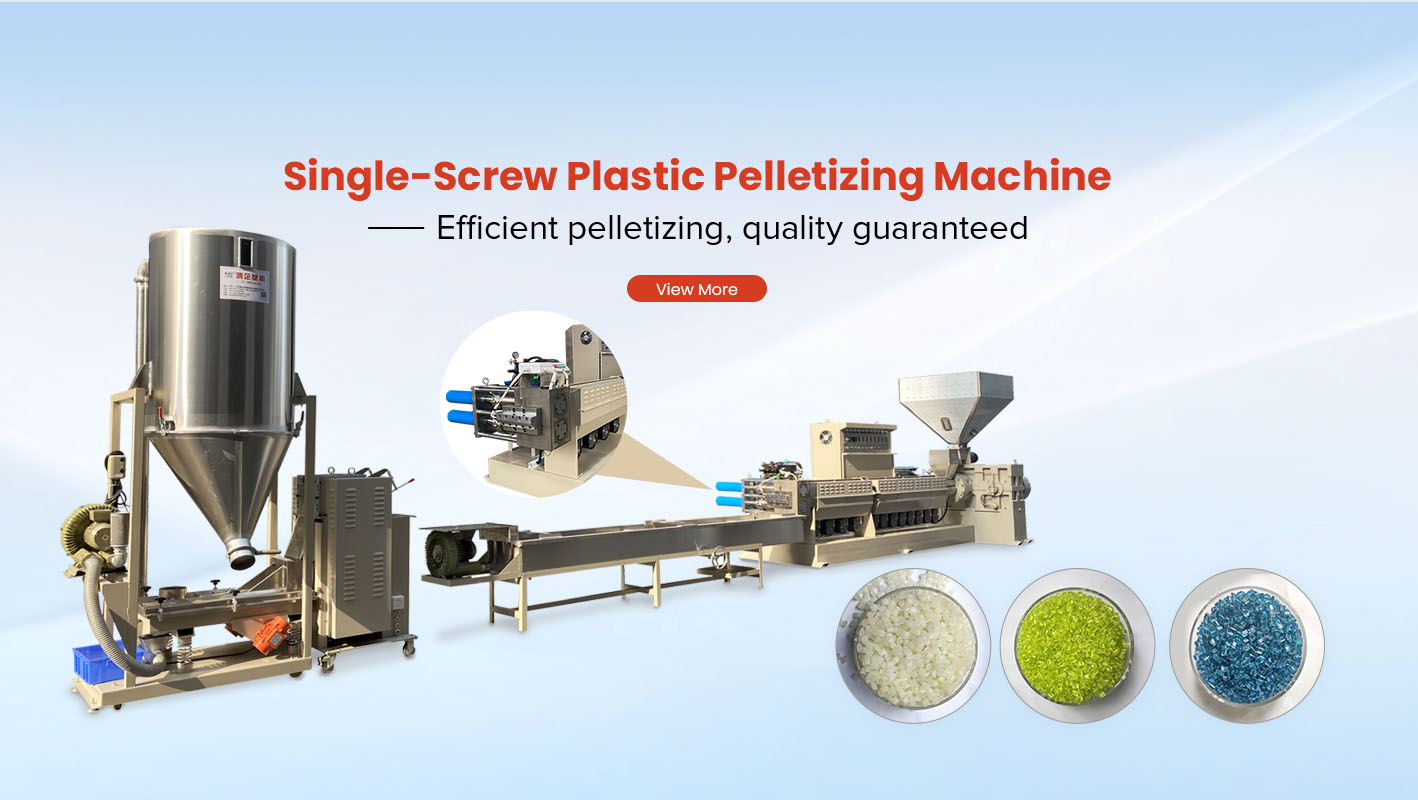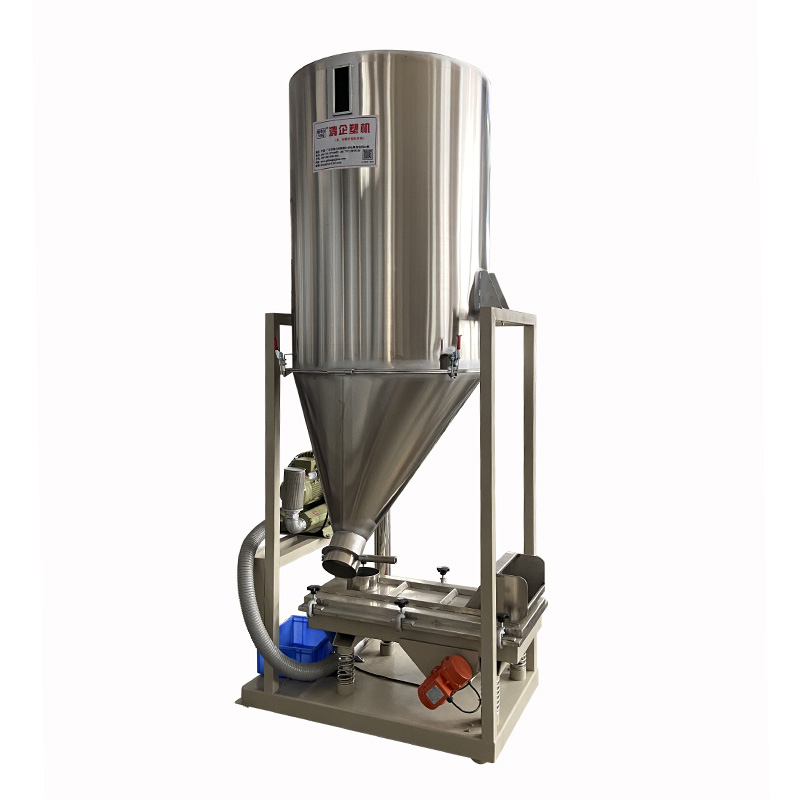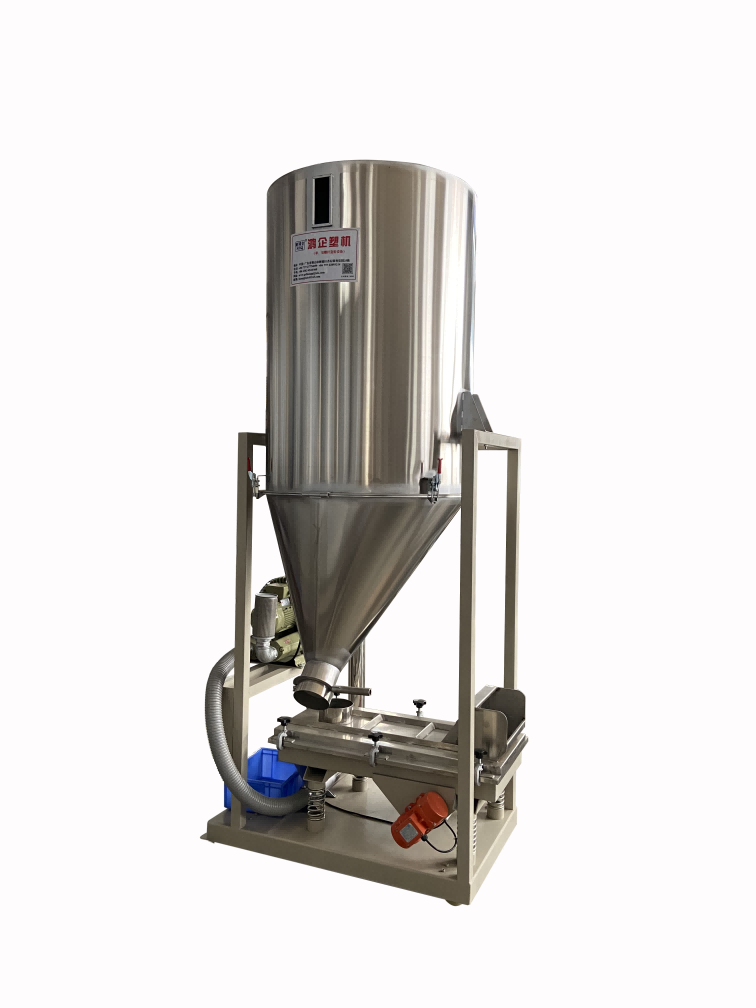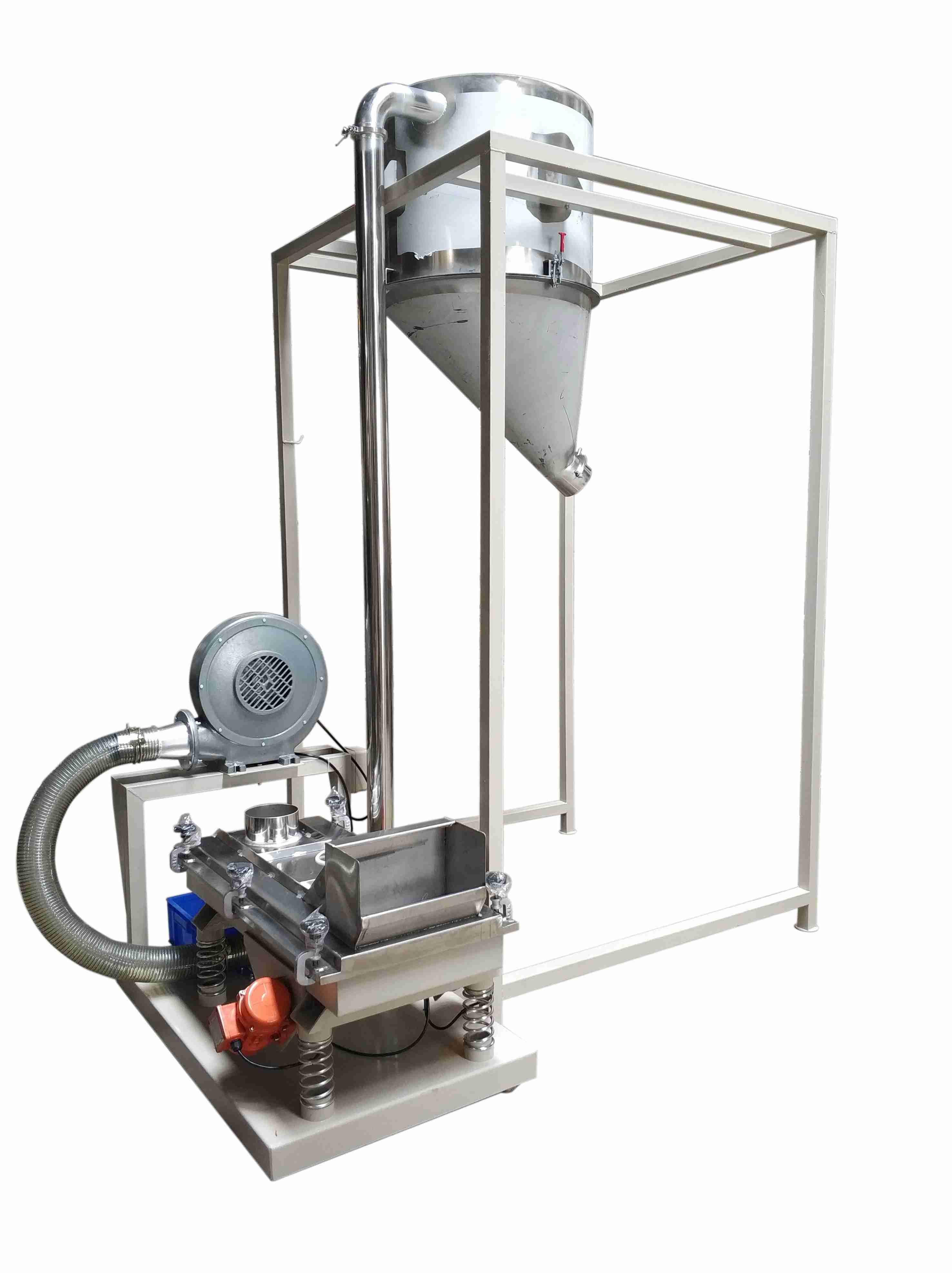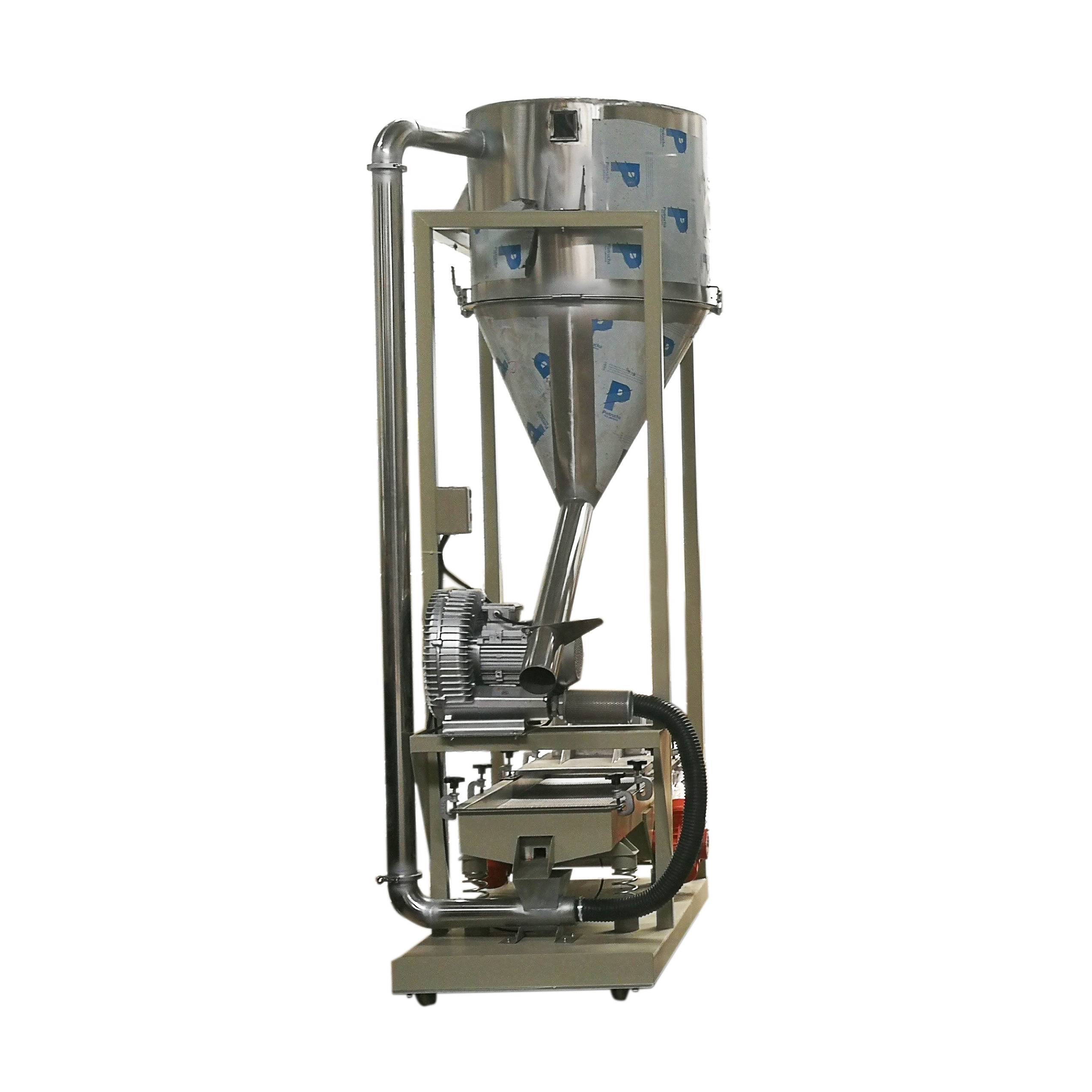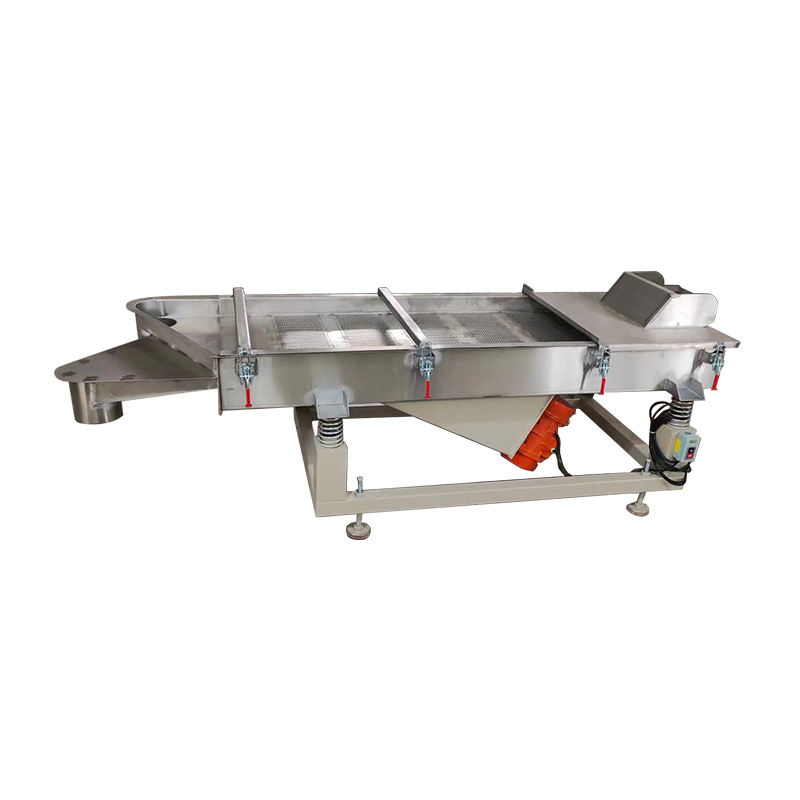Plastic Vibrating Screening Machine With Hopper
- Product Information
Vibrating Screening Machine is a device used for screening solid materials. It mainly generates vibrations through motors or other vibration sources to make the materials move on the screen surface. In this process, materials of different particle sizes will be separated. This vibrating screening machine is generally wide at the top and narrow at the bottom. The upper part is a cylindrical hopper, and the lower part is supported by a bracket. There are discharge ports and corresponding connecting pipes at the bottom, which are used to transport the screened materials and other subsequent operations.
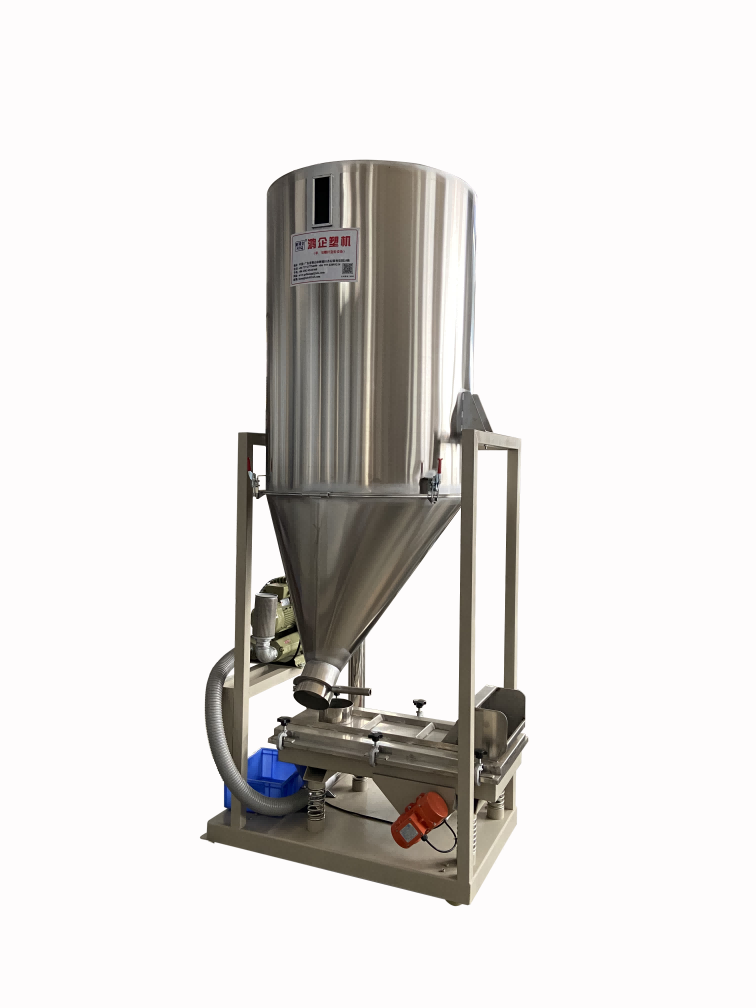
Vibrating Screening Machine Parameters
| Model | HQ-600 | HQ-1000A | HQ-1000B | HQ-1500 | HQ-2000 |
| Power (KW) | 2.2 | 2.2 | 3.8 | 3.8 | 5.5 |
| Capacity (KG/Hopper) | 350 | 350 | 350/500 | 350/500 | 500 |
| Capacity (KG/Screen ) | 350 | 350 | 350 | 500 | 1000 |
| G.W. (KG) | 200 | 250 | 280 | 320 | 450 |
| Dimension (mm) | 1050*1400*2700 | 1050*1400*2700 | 1200*1750*2700 |
Vibrating Screening Machine Features
High screening accuracy: The Vibrating Screening Machine is equipped with a precision screen, and the screen size range is usually between 0.025-5 mm. The screen size is uniform and the error is extremely small. It can accurately screen out materials that meet the set particle size range, effectively filter out unqualified particles that are too large, too small, and powdery, ensure the accuracy of the particle size of the material after screening, and meet high-precision production requirements.
Large processing capacity: The equipment has a large processing capacity and can process 0.5-10 tons of materials per hour. This is mainly due to its optimized screening area and efficient vibration mechanism, which is suitable for large-scale production scenarios, can significantly improve production efficiency, and reduce unit screening costs.
Strong operation stability: The vibrating screening machine uses high-quality motors as vibration sources, with stable motor power, working hours of up to 8-24 hours, and the vibration generated during operation is uniform and continuous. At the same time, the equipment bracket structure is stable, made of high-strength steel, and has good shock absorption performance, ensuring that the equipment will not have problems such as shaking, displacement or fault shutdown during long-term operation, and ensuring the continuity and stability of the screening process.
Widely applicable materials: Whether it is dry granular materials or materials with a certain humidity (humidity range of 0% - 30%), the vibrating screening machine can achieve good screening effects by adjusting parameters such as vibration frequency (usually 500 - 3000 times / minute), amplitude (5 - 20 mm), etc., and has strong adaptability to materials with different physical properties.
Convenient cleaning and maintenance: The key components of the equipment, such as the screen, are reasonably designed and easy to disassemble and install. When cleaning, the staff can remove the screen within 5 - 30 minutes and use a high-pressure water gun or special cleaning tools to clean it. The internal structure of the equipment is relatively simple, with few cleaning dead corners, and it is easy to keep clean and hygienic, especially suitable for industries with high requirements for sanitary conditions.
Applications of Vibrating Screening Machine
Chemical Industry: In the process of chemical raw material production, Vibrating Screening Machine can screen various granular raw materials, remove impurities and unqualified particles, and ensure the quality stability of chemical products. For example, in the production of plastic particles and rubber particles, the vibrating screening machine can ensure uniform particle size and meet the requirements of subsequent processing and molding.
Food Industry: In grain processing, it is used to screen grains such as wheat and rice, remove impurities and broken particles, and improve food quality. In snack production, nuts, granular seasonings, etc. are screened to meet different packaging specifications and edible quality requirements.
Pharmaceutical Industry: Screening of drug powders, classifying drug powders according to different particle size ranges, to ensure the accuracy and quality stability of drug dosage. In the production of tablets, capsules and other dosage forms, the vibrating screening machine is used to screen drug powders of suitable particle size to ensure the quality of drug molding.
Metal Processing Industry: In the production of metal powders, metal powders are screened to meet the requirements of different metal processing processes for powder particle size. In metal ore processing, the crushed ore particles are screened to provide high-quality raw materials for mineral processing, smelting and other processes.
Environmental protection industry: In solid waste treatment, garbage particles are screened to achieve garbage classification and resource recycling. In soil remediation projects, contaminated soil particles are screened to provide suitable soil samples for soil remediation.
Vibrating Screening Machine Maintenance Tips
1. Regular cleaning
The vibrating screening machine will have residual materials during use. If it is not cleaned in time, the materials will clump or corrode the equipment. After daily use, the equipment needs to be turned off and the power is turned off, waiting for it to be completely still. Use a soft brush to gently brush the surface of the screen to remove the attached materials. For stubborn dirt, soak it in warm water to soften it, and then use a soft brush to clean it. Wipe the material dust on the equipment casing and bracket with a clean rag to keep the appearance of the equipment neat and tidy. Regular deep cleaning, disassemble the screen every week, rinse it with a high-pressure water gun, and after cleaning all parts, carefully wipe or dry the equipment to prevent moisture residue from causing rust on the equipment or short circuit of electrical components.
2. Check fasteners
When the vibrating screening machine is running, vibration can easily loosen fasteners such as screws and bolts, causing equipment failure or even accidents. Before daily use, check all exposed fasteners, including screen clamping bolts, motor fixing screws, equipment and base connection bolts, etc. If loose, tighten them immediately with a suitable wrench. Check the fasteners of key parts thoroughly every week, such as the fixing bolts of the exciter and the connecting bolts of important supporting structures. When checking, first visually check for signs of looseness, and tighten them one by one with a wrench if necessary. Systematically check and tighten all fasteners of the equipment every month, record the status of the fasteners, focus on marking the parts that are often loose, analyze the reasons and take measures.
3. Maintenance of bearings
Bearings are the core components of the vibration screening machine and are crucial to the operation accuracy and life. After the equipment has been running for 50 hours, replace the grease for the first time, and then replace it every 200-300 hours of operation. The grease filling amount is 1/3-1/2 of the bearing space. Check the bearing temperature every week. The normal operating temperature does not exceed 70℃. If the temperature rises abnormally, check the bearing lubrication and wear. Carefully check the bearing for abnormal noise and vibration every month, check it with a stethoscope or professional instrument during operation, and repair and replace it in time if abnormalities are found. Professionally maintain the bearings every six months, disassemble the bearings, clean and inspect the inside, replace the seals and other wearing parts to ensure the bearing performance.
4. Maintain the motor
The motor is the power source of the vibrating screening machine and needs regular maintenance. Check the motor temperature every week. The temperature rise should not exceed the nameplate regulations. Generally, the motor housing temperature should not exceed 80℃. Otherwise, check for problems such as motor overload and poor ventilation. Check the motor junction box every month, tighten the terminal to prevent virtual connection and short circuit, clean up dust and debris, and keep the junction box dry and clean. Check the motor belt (if any) every quarter, adjust the tightness, visually check the degree of belt wear and aging, and replace it in time if abnormal. Perform a comprehensive inspection of the motor every year, disassemble the motor, check the wear of the rotor, stator, bearing and other parts, perform insulation resistance test, and perform maintenance when necessary.
5. Maintain the screen
The screen is a key component. Regular inspection and maintenance can ensure the quality and efficiency of screening. Before daily operation, check whether the screen is damaged, deformed, or loose. Replace and repair it in time if abnormal. Clean the screen every week, brush the surface lightly with a soft brush to remove attached materials, and soak and soften stubborn dirt in warm water before cleaning. Avoid scratching with hard objects or directly washing with a high-pressure water gun to prevent damage to the screen. Check the tension of the screen every month to ensure that the tension is even and moderate. Too tight or too loose will affect the screening effect and the life of the screen. Check the sealing of the screen and the screen frame every quarter. If the sealing is not tight, deal with it in time to prevent material leakage from affecting the screening efficiency. According to the frequency of use and the degree of wear of the screen, replace the screen regularly. Generally, the service life of the screen is 1-3 months. If the wear is serious, replace it in time to ensure the screening quality.
6. Check the sealing performance
The sealing performance of the vibration screening machine is crucial to prevent material leakage and the entry of external impurities. Check the sealing parts of the equipment every day, such as the sealing strips or gaskets between the screen box and the base, the discharge port, etc., and replace them in time if they are damaged, aged, or deformed. Check the sealing of the equipment lubrication system and hydraulic system (if any) every month to check for oil leakage, check the seals and pipeline connections, and repair them in time if problems are found. Check the sealing of the equipment protective cover, observation window and other parts every quarter to ensure that they are well sealed to prevent external debris from entering the equipment and affecting normal operation.

